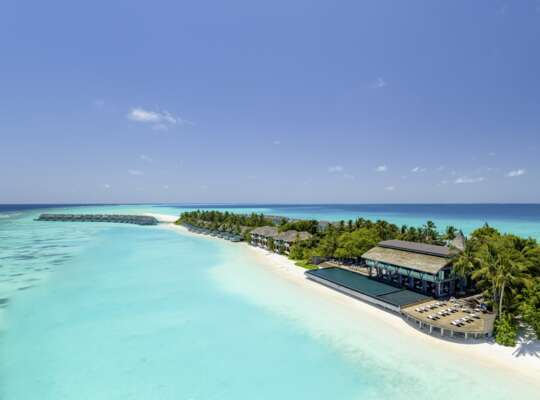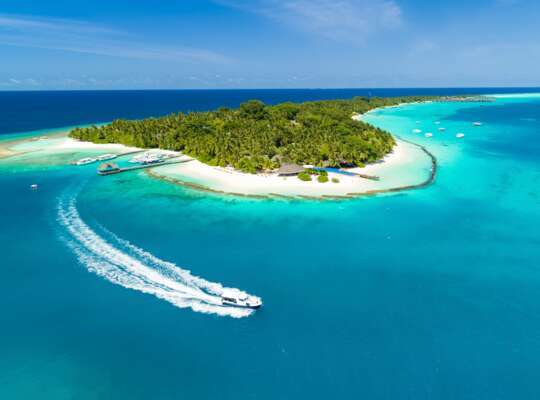The iconic coastal hubs of Split and Dubrovnik are rich in history and splendour, but which is the best place in Croatia for a first-time visit? They are both captivating bucket-list cities – let our Split vs Dubrovnik travel guide help you decide.
At a glance: How Split and Dubrovnik compare
If you’re comparing Split vs Dubrovnik holidays, here’s what you need to know.
Both cities lie along the Dalmatian Coast, named after the ancient Illyrian tribe, the Delmatae. Furthest north, Split is the largest, and its personality blends its ancient Roman roots with a buzzy, lived-in energy. It’s a real working city with a soul. You’ll encounter locals chatting over espresso in tucked-away squares, tourists exploring Diocletian’s Palace, and the hum of nightlife echoing through its narrow, cobbled streets. It’s ideal for travellers who like a mix of culture, activity and after-dark atmosphere.
Around four hours south by car, Dubrovnik is more petite and polished; a fairytale walled city perched on the clear waters of the Adriatic, known for its sophisticated charm and cinematic beauty. The Old Town is impossibly pretty, with polished marble streets, Baroque churches and a regal atmosphere. It’s a favourite with honeymooners, couples, and anyone seeking scenic photo opportunities.
Sun, sea and sightseeing: Things to do in Split or Dubrovnik
You won’t be bored in either city, whether you're in search of culture, beaches or fabulous food. In Split, top things to do include exploring Diocletian’s Palace, an ancient Roman complex that is entwined into city life. The Riva promenade is perfect for a sundowner and people-watching, while Marjan Hill is a forested park with great views, cycling trails and a sprinkling of beaches.
Dubrovnik’s Old Town is the main attraction – you can walk the imposing city walls for a view of terracotta rooftops, or hop on a Game of Thrones tour to see where key scenes were filmed. Cruise to the Elafiti Islands or swim off Banje Beach, before riding the cable car to Mount Srd.
Cultural experiences and historical sites
Split and Dubrovnik are brimming with historical sites. Split is home to some of the best-preserved Roman architecture in Europe, including Diocletian’s Palace, which is unique as, despite being a historical monument, it houses shops, bars and even homes, with around 3,000 people living inside its walls. You'll also find medieval churches, lively markets and the striking Cathedral of Saint Domnius.
Dubrovnik is built from ancient stones. The UNESCO-listed Old Town is a living museum, packed full with landmarks such as the Rector's Palace and Franciscan Monastery. For cultural travellers, every corner turned reveals a new treat. Elegantly dressed street musicians mesmerise passersby in summer.
Hungry? Split and Dubrovnik food and dining
When it comes to Split and Dubrovnik food and dining, you should bring your appetite. Croatian food is a blend of filling meat dishes, seafood and flavourful pasta (thanks to its proximity to Italy!) Try pašticada (beef stew), peka (meat and vegetables cooked under a bell), ćevapi (grilled minced meat), and soparnik (Swiss chard pie).
Split offers a rustic, local dining experience, with konobas (taverns) serving black risotto, grilled fish and octopus salad. You’ll also find excellent Italian-inspired cuisine and an emerging vegan scene.
Dubrovnik is more upscale. Expect starry-eyed rooftop dinners and exquisite seafood, alongside Mediterranean-influenced fusion dishes. Both cities are a gourmand’s delight, but Dubrovnik is more cultured, while Split feels cosier and more authentic.
Split vs Dubrovnik nightlife: From cocktails to clubbing
For those comparing Split and Dubrovnik nightlife, there’s a clear difference. Split is the night owl, with a younger, livelier crowd. The city shifts up a gear at night, with beach bars, nightclubs and live music. Head to Bacvice Beach for cocktails and dancing by the sea, or squeeze down the packed narrow lanes inside Diocletian’s Palace until you find the best nightclub.
Dubrovnik has a more mature social scene. You’ll find discreet wine bars, candlelit flower-filled terraces and open-air jazz. It’s more about sunset drinks and stylish lounges than late-night raves. If you're after pulsating energy, opt for Split. If you favour a toast under the stars rather than a night on the dancefloor, Dubrovnik is your haven.
Best beaches in Split or Dubrovnik
Wondering about the best beaches in Split or Dubrovnik?
Split offers variety: head to Bačvice Beach for easy swimming and a busy social scene. A short bus, bike or taxi ride away, at the foot of Marjan Hill, is the peaceful Kašjuni Beach, backed by forested slopes.
Dubrovnik has a selection of small but striking beaches. Banje Beach is right next to the city walls – you can swim through translucent blue water while admiring the old town views. Sveti Jakov is a more peaceful choice, snuggled between burnt umber cliffs and reached by a 1km scenic walk. To get even further into nature, take a boat over to nearby islands for secret coves and snorkelling spots.
When to go: Split vs Dubrovnik weather and seasons
The best time to visit Split or Dubrovnik depends on what activities you want to do. Summer brings long, hot and sunny days, perfect for the beach and island hopping. The shoulder seasons – May, September and even October – are ideal for warm weather, perfect for city strolls, hikes or cycling trips.
Split stays milder in winter, with a more local, lived-in feel. Dubrovnik can feel quiet in the off-season, but it is enchanting in spring and autumn.
Split or Dubrovnik for families, couples and honeymoons
Split is the perfect base for active families who want beach time, but also to explore Roman ruins and see the coast by boat. It also caters well for groups of friends and island-hoppers.
Dubrovnik pulls in couples and honeymooners. It’s dreamy, dramatic and photogenic. Stay in a spa hotel and enjoy candlelit dinners, and you’ve got the ingredients for a magical escape.
Sailing between the two: Why not visit both?
See the best of Split, Dubrovnik and everything in between by boat on an island-hopping tour. Cruising gives a new perspective on the stunning scenery, and allows for swim and snorkel stops en route. Stop off at Brač, Hvar and Korčula and discover their sleepy, timeless harbours.
How many days in Split or Dubrovnik?
Allow three to four days to see central Split, enjoy beach time, and take a few day trips to islands or the impressive Krka National Park.
Compact Dubrovnik is easily explored in two to three days. Be impressed by the city walls, kayak the coast and still have time for relaxation.
Dubrovnik President Valamar Collection
Where to stay: Hotels in Split and Dubrovnik
Wake up, open the curtains and drink in the sea view at the Sun Gardens Dubrovnik – a place for some self-indulgence. For families and couples, we love the Dubrovnik President Valamar Collection for its easy beach access and location near the city.
In Split, immerse yourself in 100 years of history at the Hotel Park Split, next to Bacvice Beach.
Getting around: Travel tips for Split and Dubrovnik
Both Split and Dubrovnik can be explored on foot. Outside the historic centre, Dubrovnik has steep steps and narrow lanes, but those who embrace the climb are rewarded with breathtaking views from the top of Mount Srd – or simply take the cable car.
In Split, everything from the Riva promenade to Marjan Park is accessible on foot or by bike. Ferries and water taxis make island-hopping a breeze.
Inspired?
Still deciding between Split vs Dubrovnik for a holiday? Call us and let our Croatia experts guide you.
This feature was created on the 3rd July 2025. The information within this feature is correct to the best of our knowledge at the time of publication.







_w=24_h=25.png?v=b71667f1b0243497a8c080edd5d032e11f899818)
_w=24_h=25.png?v=b71667f1b0243497a8c080edd5d032e11f899818)
_w=24_h=25.png?v=b71667f1b0243497a8c080edd5d032e11f899818)